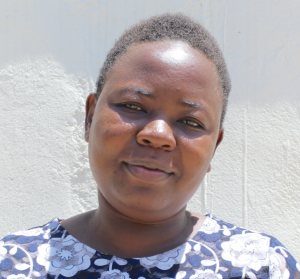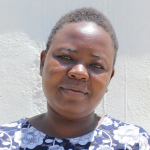On the day we first traveled to Lwakhupa Secondary School, the weather was cold in the morning and later in the afternoon it started raining heavily. This forced us to stop at different stages because we had no umbrella to cover us.
Lwakhupa Mixed Secondary School was started in the year 2013. Being a newer school, the government has helped in the construction of two classrooms and donated one plastic tank with a capacity of 10,000 liters. That plastic tank is the only source of water on school grounds, and is really only available during the rainy seasons. During the dry season, these 317 students and staff have to leave school grounds to find water.
They most often take their buckets to a spring in the community, the one that the adjacent primary school's students also frequent.
A clean water shortage has severely limited the amount of water available for students to drink and clean their environment. After finding out we visited Lwakhupa Primary School, the secondary school administration asked us to consider them because they too are facing the same issues. With added storage to capture rain, they know that there will be enough water for their students to sate their thirst at any point throughout the day.
Students study languages, mathematics, religion, biology, and chemistry. They are eager to have enough water so that they can focus on their subjects and do well enough to enter university.
What we can do:
Training
"This school suffers a lot due to lack of enough knowledge about water, sanitation, and hygiene. If only they could get that information, they could be in a better place," said Mr. Benson Wasike, a teacher at the school.
"Ignorance is the root cause of many problems faced in this village and school, the community just needs sensitization on how they should live a healthy life and all will be well."
Training on good hygiene habits will be held for two days. The facilitator will use PHAST (participatory hygiene and sanitation transformation), ABCD (asset-based community development), CTC (child to child), lectures, group discussions, and handouts to teach health topics and ways to promote good practices within the school. The CTC method will prepare students to lead other students into healthy habits, as well as kickstart a CTC club for the school.
After visiting with teachers and students, we determined to address personal hygiene; leadership and management; handwashing; water handling; water treatment.
Handwashing Stations
Students are not washing their hands because there are no handwashing stations available, nor would there be enough water to fill them.
Two handwashing stations will be delivered to the school, and the CTC club will fill them with water on a daily basis and make sure there is always a cleaning agent such as soap or ash.
VIP Latrines
There are only three latrines for each gender. These are not in good condition because there are too many students using them and are not clean because there isn't enough water.
Two triple-door latrines will be constructed with local materials that the school will help gather. Three doors will serve the girls while the other three serve the boys. And with a new source of water on school grounds, students and staff should have enough to keep these new latrines clean.
Rainwater Catchment Tank
A 50,000-liter rainwater catchment tank will help alleviate the water crisis at this school. The school will also help gather the needed materials such as sand, rocks, and water from the spring for mixing cement. Once finished, this tank can begin catching rainfall that will be used by the school’s students and staff.
We and the school strongly believe that with this assistance, standards will significantly improve. These higher standards will translate to better academic performance!

 Rainwater Catchment
Rainwater Catchment
 Rehabilitation Project
Rehabilitation Project



































